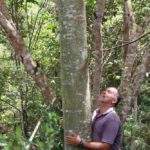brCarbon is responsible for the entire execution of the project, from the feasibility analysis to the sale of the credits. We cover all the costs of implementing the REDD+ project and assist the rural landowner in finding investments for rehabilitation. The landowner just needs to allow the project activities to be implemented on their property and commit to contributing to the project for a period of 40 years, either by preserving the forest, planting species or adopting good agricultural practices.
How the partnership with brCarbon works
Requisitos
Why brCarbon?
Check out the feedback from our partners
“I recommend brCarbon to other producers. With the price of beef today, one of the best solutions is to produce in a sustainable way, while preserving the forest, and I'm not afraid to recommend brCarbon to anyone because I believe it will be a great solution for us, cattle ranchers.”

“I am a supporter of both the company and the way it is conducting the process: serious, transparent, involvement of the surrounding community, independent evaluations and audits. We're pleased with it and the projections and calculations are very attracting. Today it is more profitable to keep the forest preserved than to raise cattle in the same area.”

“The partnership has been very good for me. Today the Pratigi Project is like the flagship of our company: protecting the environment. We depend on big companies to buy our products, and they're very connected. When they get here, they ask how we're preserving the springs, how the PPAs have been maintained... So, we're ahead of the game.”

“We have to worry about the forest, it plays a very noble role, such as being responsible for rain corridors, for example. Furthermore, another advantage for landowners in participating in projects like the Emas-Taquari is that they can regularize land with environmental liabilities.”
